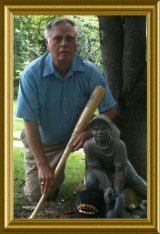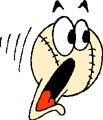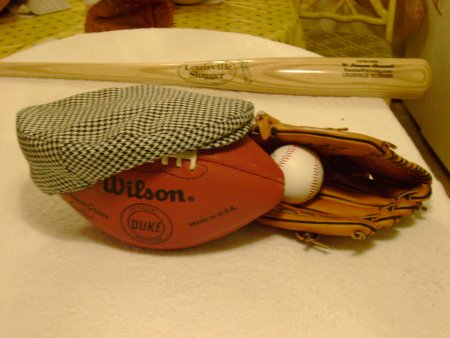Baseball Signals
Native Americans Knew Hand Signals Was Needed
Forked Tongue White Man Never Talk Straight

Baseball Signals has become the talk of the diamonds without a word being spoken.
Our native American brothers taught us early on in the making of our great Nation that the eloquent use of hand signals was a necessary part of communicating with the forked tongue white man.
The Navajo Tribe Marine Members of the United States Marine Corps were world class in every word for their radio communications duties during World War II. Their radio talk signals was never deciphered by the Japanese fighters. The Navajo code talkers were super significant and responsible for much of the Marines battle successes and should never be forgotten.
The American game of baseball we all (at least many) have grown up playing and loving has become the breeding ground of the hand signals and signal giving sign world.
Baseball signals are a basic ingredient of a well played baseball game. The baseball hand signals or baseball hand signs go from the simple to the complicated but from the small fry Little League to the talented and polished Major Leagues they are needed as well as heeded.
 "Baseball players have been taught since Beginners to be alert and to keep their head in the game that also means not missing the called baseball signals."
"Baseball players have been taught since Beginners to be alert and to keep their head in the game that also means not missing the called baseball signals."
Coaches turn gray and get hoarse screaming, because the players miss their baseball signals "Hey boy pay attention get your head into the game."
"Once there was a fine young pitcher who would talk to me about learning English he would try to get me to understand if he held his fingers just right and when he let go with a twist I was suppose to curve. He would exclaim, "That is the English you need to learn so pay attention to what I tell you to do." "
"His grip and signals became second nature and soon his English signals needed no talk just how he used his fingers placing them on the seams soon we were on the same page.
Shall we dwell a moment to understand there are many signs and signals but normally these are the four primary sources of baseball signal givers.
Keep in mind there are many combinations of baseball signals but these are the fundamental or basic ones for sure.
1 Catcher to Pitcher
2 Manager(in the dugout) to the Third Base Coach.
3 Third Base Coach signals/signs to the hitters/base runners.
4 Umpire gives hand signals
The catcher provides a baseball signal to the pitcher for every pitch for the type pitch to deliver.
The Battery mates the catcher and the pitcher act in concert with the catcher giving the pitcher a baseball signal for each pitch for the pitcher to throw.
The catcher takes a squatting position there in the catchers box behind home plate. His left forearm rests on the left knee with his catchers mitt in front of his left knee. Using his right hand resting against his right leg and near his crotch.
Now he is ready to give the pitch sign by using fingers pointing downward he signals with how many fingers he shows exactly which pitch the pitcher is to throw.
There ar multiple combinations but to keep it simple for understanding the basic signs here are the old school boy standards. One finger pointing down (fast ball), two fingers (a curve), three fingers (drop), four fingers (change up/off speed).
Now to enhance the effect of the pitch coming the catcher will move his catchers mitt into a position as a target for the pitcher to put the pitch.
The catchers mitt in front of the left knee and the right hand near the crotch of the right leg is designed so as to shield as best as possible the opposing team runner or the other team observers to not have a good view of the baseball signal or pitch being called for by the catcher.
The manager or coach in the dugout will seldom send a baseball signal to his third base coach but occasionally he wants to do the hit and run so he flashes the sign to the third base coach who communicates and signals to the hitter and runner.
The same applies for laying down a sacrifice bunt to advance a runner into scoring position.
A sign to take a strike before swinging at a pitch is a dugout coach to the third base coach and the third base coach gives the baseball signals to the hitter.
Keep in mind there are many different combinations of signals but signals the third base coach might get from the dugout the third base coach is always assigned the task of giving the signals to the hitter and runners.
The third base coach provides to every hitter coming to the plate sometimes he simply give the hit away signal for the hitter to use his own judgment and to hit the ball.
If he wants the hitter to bunt he signals to do so. If he wants the hitter to take a strike he signals it. If he wants the hitter and a baserunner to execute a hit and run play he signals it to the hitter and the runner.
Other than telling the hitter by signs his primary job once a runner reaches second base the signs now become a third base coach and this runner to make sure the runner is protected for any action with the sole purpose of getting that runner home safe and sound to score a run.
Runners coming full steam to third base based on the play it is the third base coaches responsibility to tell that runner to hit the dirt in a slide, or stay standing up or to put the petal to the metal and head on home.
To slide the coach stretches his arm out front with both palms down. easy slide he holds his hands steady but to come with a hard slide he pats downward with his hands. come in standing up he holds boths arms out front in fists with both thumbs up.
Petal to the metal and go on home in full stride and hard as possible he is backing up further into foul territory with his right arm fully extended and swinging full circle like he is cranking a "T" Model Ford.
Dummy Hoy and Luther Taylor brought about the use of umpire hand signals.
The Umpire behind the plate calling balls and strikes uses the right arm up to signal a strike and left arm up for balls or no arm movement is also considered a called ball.
To call time out the umpire throws both arms up and usually will sometimes walk out in front of home plate.
Umpires calling the bases has a responsibility to call a runner advancing to a base as being safe or out according to the throw and or the tag of the runner by a fielder.
The tag on a runner approaching the bag if safe the umpire bends over looks intently at the tag and if safe he extends his arms palms down and waves his arms back and forth like he's shooing flies away from the buttermilk. If the runner is out the umpire throws his right arm up and back with his thumb up as if saying you're outta here.
Base umpires hand signal is requires to signal if a ball landing near the foul line is fair or foul. If fair he both arm waves with palms facing fair territory, if foul he waves both arm with palms facing foul territory.
DID YOU KNOW ABOUT WILLIAM HOY AND LUTHER TAYLOR?
Many, many years ago a couple of deaf players loved and played the game of baseball. These two gentlemen, a Mr. Luther Taylor and Mr.William Hoy, are owed a tremendous debt of gratitude for their dedicated insistence for use and development of our umpire hand baseball signals.
Their courage to play the game of baseball before crowds watching their every move and action put them both on display and many a less stout hearted persons would have never stood and played little less excel.
Luther and William are vivid reminders of what not only made them as individuals great among many but it tells a story about our game of baseball as well.
William and Luther advancing the hand signal requirement for acceptance as the norm and such as Pete Gray and Jim Abbot foregoing tremendous physical handicaps and Jackie Robinson taking up the mantle bringing desegregation to the forefront. Folks when you witness such as this all in the name of our great game of baseball you have to marvel at the far reach of this sport we call BASEBALL.
I refer to these gentlemen as Mr. in respect for what they did for our great game of baseball signals. You see they are credited with making umpire hand signals an integral part of the game.
Dummy Hoy, William Ellsworth Hoy played professional baseball from 1888-1932 with a lifetime batting average of .288.
Here is a most fascinating and intriquing story about how baseball language can be a controlling force even somewhat akin to how our USMC Navajo Code Talkers pulled the trick during World War II.
Giving Baseball Signals in Yiddish! By Mark Benson
During baseball’s early years, Jimmy Reese (Not Pee Wee) and other Jews sometimes concealed their religion. The story of how Reese revealed his Jewish identity is quite amusing.
"Reese changed his given name to Jimmy Reese, and no one knew that he was Jewish when he broke in with the Yankees in 1930," says Abramowitz. Reese batted .346 in his rookie year with the Bronx Bombers, and was an astounding 10 for 20 that season as a pinch-hitter. "One day, in an exhibition game, Reese stepped into the batter’s box against a Jewish pitcher and Jewish catcher who communicated their signs in Yiddish. Reese feasted on this pitcher in the past, and the catcher was perplexed."
"You are hitting the ball extremely well against us — it’s as if you know what we’re going to throw before the ball comes to the plate" the catcher said to Reese, according to Abramowitz. "We’re giving each other signs in Yiddish — there is no way that you could know that."
Then, says Abramowitz, "Reese paused, then he told the catcher, ‘My name is Hymie Solomon.’"
Batter Up----Let's Play Ball....
Go Shopping Here Baseballfarming For Convenience and Pleasure.

